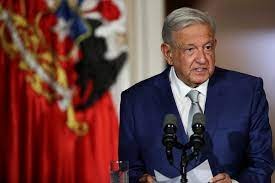Russia will launch Luna-25, a lunar lander that will compete with Chandrayaan-3
In over 50 years, Russia successfully launched Luna-25, a spaceship destined for the moon. A historic soft landing on the lunar south pole is what is intended. Shortly after India’s Chandrayaan-3 mission took flight, this major milestone was taken.
On August 23, the lunar lander from Russia will touch down nearly concurrently with the spacecraft from India. The Russian spacecraft will travel for nearly 5.5 days to get close to the moon. After that, it will circle for three to seven days at a height of around 100 kilometers. That distance, from there to the lunar surface, is around 62 miles.
Roscosmos, the Russian space agency, has said that it wants to show off the country’s capabilities to send payloads to the moon. It highlights how crucial it is to provide secure access to the moon’s surface.
Only three nations—the Soviet Union, the United States, and China—have successfully landed people on the moon in the past. Now, both nations are competing to complete the first soft landing near the south pole of the moon.
Roscosmos’ live video feed verified that the Luna-25 spacecraft left the Vostochny Cosmodrome in Russia’s Far East and began its faultless mission. For Russian President Vladimir Putin, this spaceport is especially important since it is a key component of his plan to advance Russia’s place in space research and eventually move launch operations away from Kazakhstan’s Baikonur Cosmodrome.
Scientists are particularly interested in the lunar south pole because it may have water resources in the form of frozen ice beneath permanently shadowed craters. According to experts, this frozen water might be a useful resource for astronauts in the future. Researchers want to investigate whether they can transform it into vital rocket fuel and breathing air.
Chandrayaan-3 intends to carry out a number of experiments over the course of two weeks, but Luna-25 is built for a longer stay with a one-year mission. Notably, ispace, a commercial space firm based in Japan, had a setback in April when it attempted a ground-breaking lunar landing.
The mission had an almost two-year delay from its original October 2021 launch date. Initially, the European Space Agency wanted to support the Luna-25 project using its Pilot-D guidance camera. After Russia’s participation in the crisis in Ukraine, it cut connections with the project owing to the geopolitical environment.







